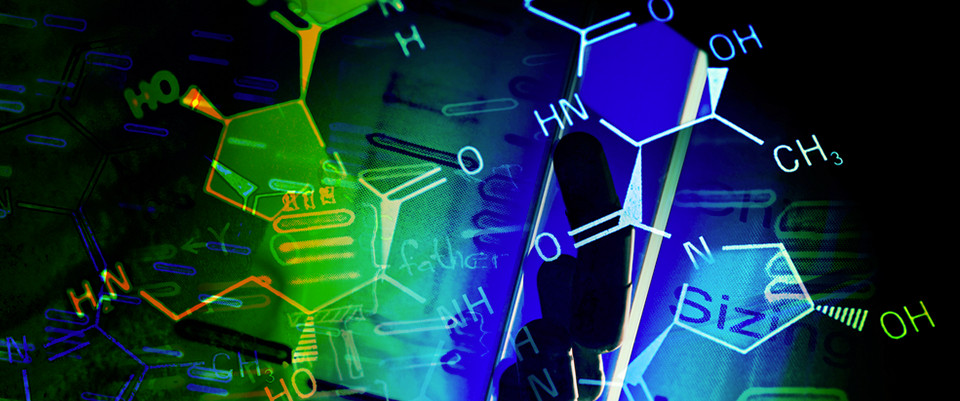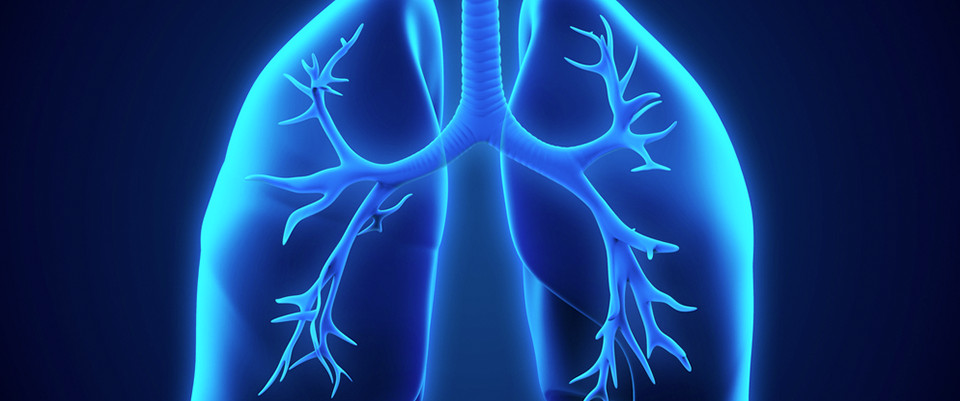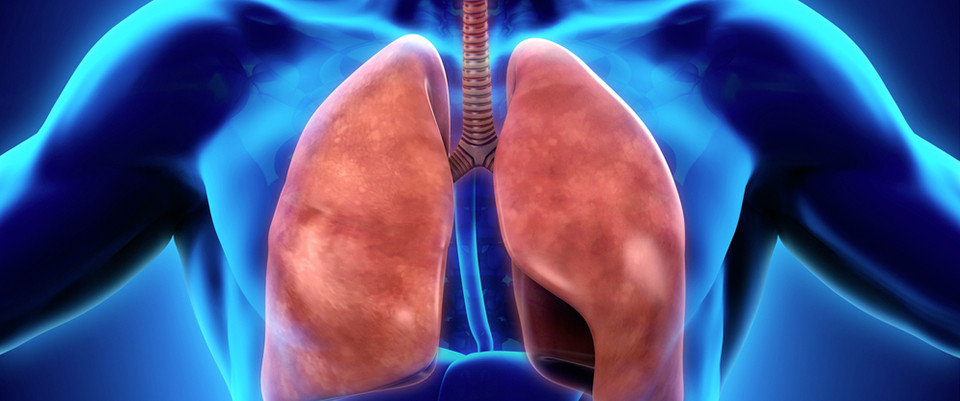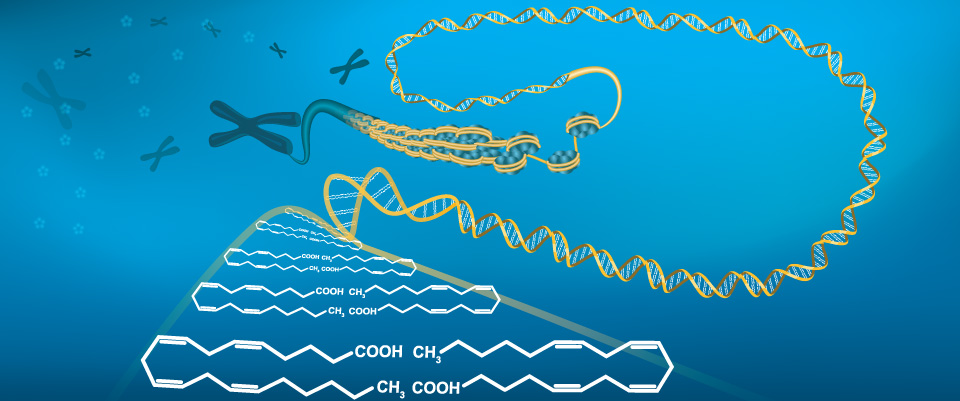PubMed
Qualitative and quantitative characterization of secondary metabolites and carbohydrates in Bai-Hu-Tang using ultraperformance liquid chromatography coupled with quadrupole time-of-flight mass spectrometry and ultraperformance liquid chromatography...
Related Articles
Qualitative and quantitative characterization of secondary metabolites and carbohydrates in Bai-Hu-Tang using ultraperformance liquid chromatography coupled with quadrupole time-of-flight mass spectrometry and ultraperformance liquid chromatography coupled with photodiode array detector.
J Food Drug Anal. 2017 Oct;25(4):946-959
Authors: Zhong WF, Tong WS, Zhou SS, Yip KM, Li SL, Zhao ZZ, Xu J, Chen HB
Abstract
Bai-Hu-Tang (BHT), a classic traditional Chinese medicine (TCM) formula used for clearing heat and promoting body fluid, consists of four traditional Chinese medicines, i.e., Gypsum Fibrosum (Shigao), Anemarrhenae Rhizoma (Zhimu), Glycyrrhizae Radix et Rhizoma Praeparata cum Melle (Zhigancao), and nonglutinous rice (Jingmi). The chemical composition of BHT still remains largely elusive thus far. To qualitatively and quantitatively characterize secondary metabolites and carbohydrates in BHT, here a combination of analytical approaches using ultraperformance liquid chromatography coupled with quadrupole time-of-flight mass spectrometry and ultraperformance liquid chromatography coupled with photodiode array detector was developed and validated. A total of 42 secondary metabolites in BHT were tentatively or definitely identified, of which 10 major chemicals were quantified by the extracting ion mode of quadrupole time-of-flight mass spectrometry. Meanwhile, polysaccharides, oligosaccharides, and monosaccharides in BHT were also characterized via sample pretreatment followed by sugar composition analysis. The quantitative results indicated that the determined chemicals accounted for 35.76% of the total extract of BHT, which demonstrated that the study could be instrumental in chemical dissection and quality control of BHT. The research deliverables not only laid the root for further chemical and biological evaluation of BHT, but also provided a comprehensive analytical strategy for chemical characterization of secondary metabolites and carbohydrates in traditional Chinese medicine formulas.
PMID: 28987372 [PubMed - indexed for MEDLINE]
OLS Client and OLS Dialog: Open Source Tools to Annotate Public Omics Datasets.
Related Articles
OLS Client and OLS Dialog: Open Source Tools to Annotate Public Omics Datasets.
Proteomics. 2017 Oct;17(19):
Authors: Perez-Riverol Y, Ternent T, Koch M, Barsnes H, Vrousgou O, Jupp S, Vizcaíno JA
Abstract
The availability of user-friendly software to annotate biological datasets and experimental details is becoming essential in data management practices, both in local storage systems and in public databases. The Ontology Lookup Service (OLS, http://www.ebi.ac.uk/ols) is a popular centralized service to query, browse and navigate biomedical ontologies and controlled vocabularies. Recently, the OLS framework has been completely redeveloped (version 3.0), including enhancements in the data model, like the added support for Web Ontology Language based ontologies, among many other improvements. However, the new OLS is not backwards compatible and new software tools are needed to enable access to this widely used framework now that the previous version is no longer available. We here present the OLS Client as a free, open-source Java library to retrieve information from the new version of the OLS. It enables rapid tool creation by providing a robust, pluggable programming interface and common data model to programmatically access the OLS. The library has already been integrated and is routinely used by several bioinformatics resources and related data annotation tools. Secondly, we also introduce an updated version of the OLS Dialog (version 2.0), a Java graphical user interface that can be easily plugged into Java desktop applications to access the OLS. The software and related documentation are freely available at https://github.com/PRIDE-Utilities/ols-client and https://github.com/PRIDE-Toolsuite/ols-dialog.
PMID: 28792687 [PubMed - indexed for MEDLINE]
Potentiation of the bioavailability of blueberry phenolic compounds by co-ingested grape phenolic compounds in mice, revealed by targeted metabolomic profiling in plasma and feces.
Related Articles
Potentiation of the bioavailability of blueberry phenolic compounds by co-ingested grape phenolic compounds in mice, revealed by targeted metabolomic profiling in plasma and feces.
Food Funct. 2016 Aug 10;7(8):3421-30
Authors: Dudonné S, Dal-Pan A, Dubé P, Varin TV, Calon F, Desjardins Y
Abstract
The low bioavailability of dietary phenolic compounds, resulting from poor absorption and high rates of metabolism and excretion, is a concern as it can limit their potential beneficial effects on health. Targeted metabolomic profiling in plasma and feces of mice supplemented for 15 days with a blueberry extract, a grape extract or their combination revealed significantly increased plasma concentrations (3-5 fold) of blueberry phenolic metabolites in the presence of a co-ingested grape extract, associated with an equivalent decrease in their appearance in feces. Additionally, the repeated daily administration of the blueberry-grape combination significantly increased plasma phenolic concentrations (2-3-fold) compared to animals receiving only a single acute dose, with no such increase being observed with individual extracts. These findings highlight a positive interaction between blueberry and grape constituents, in which the grape extract enhanced the absorption of blueberry phenolic compounds. This study provides for the first time in vivo evidence of such an interaction occurring between co-ingested phenolic compounds from fruit extracts leading to their improved bioavailability.
PMID: 27443888 [PubMed - indexed for MEDLINE]
Reduced cognitive function, increased blood-brain-barrier transport and inflammatory responses, and altered brain metabolites in LDLr -/-and C57BL/6 mice fed a western diet.
Reduced cognitive function, increased blood-brain-barrier transport and inflammatory responses, and altered brain metabolites in LDLr -/-and C57BL/6 mice fed a western diet.
PLoS One. 2018;13(2):e0191909
Authors: Rutkowsky JM, Lee LL, Puchowicz M, Golub MS, Befroy DE, Wilson DW, Anderson S, Cline G, Bini J, Borkowski K, Knotts TA, Rutledge JC, Mouse Metabolic Phenotyping Center Imaging Working Group
Abstract
Recent work suggests that diet affects brain metabolism thereby impacting cognitive function. Our objective was to determine if a western diet altered brain metabolism, increased blood-brain barrier (BBB) transport and inflammation, and induced cognitive impairment in C57BL/6 (WT) mice and low-density lipoprotein receptor null (LDLr -/-) mice, a model of hyperlipidemia and cognitive decline. We show that a western diet and LDLr -/- moderately influence cognitive processes as assessed by Y-maze and radial arm water maze. Also, western diet significantly increased BBB transport, as well as microvessel factor VIII in LDLr -/- and microglia IBA1 staining in WT, both indicators of activation and neuroinflammation. Interestingly, LDLr -/- mice had a significant increase in 18F- fluorodeoxyglucose uptake irrespective of diet and brain 1H-magnetic resonance spectroscopy showed increased lactate and lipid moieties. Metabolic assessments of whole mouse brain by GC/MS and LC/MS/MS showed that a western diet altered brain TCA cycle and β-oxidation intermediates, levels of amino acids, and complex lipid levels and elevated proinflammatory lipid mediators. Our study reveals that the western diet has multiple impacts on brain metabolism, physiology, and altered cognitive function that likely manifest via multiple cellular pathways.
PMID: 29444171 [PubMed - in process]
Effect of Bulk MoS₂ on the Metabolic Profile of Yeast.
Effect of Bulk MoS₂ on the Metabolic Profile of Yeast.
J Nanosci Nanotechnol. 2018 Jun 01;18(6):3901-3907
Authors: Yu Y, Yang Q, Wu N, Tang H, Yi Y, Wang G, Ge Y, Zong J, Madzak C, Zhao Y, Jiang L, Huang H
Abstract
MoS2, a kind of two-dimensional material with unique performances, has been widely used in many fields. However, an in-depth understanding of its toxicity is still needed, let alone its effects on the environmental microorganism. Herein, we used different methods, including metabolomics technology, to investigate the influence of bulk MoS2 (BMS) on yeast cells. The results indicated that high concentrations (1 mg/L and more) of BMS could destroy cell membrane and induce ROS accumulation. When exposed to a low concentration of BMS (0.1 mg/L), the intracellular concentrations of many metabolites (e.g., fumaric acid, lysine) increased. However, most of their concentrations descended significantly as the yeast cells were treated with BMS of high concentrations (1 mg/L and more). Metabolomics analysis further revealed that exposure to high concentrations of BMS could significantly affect some metabolic pathways such as amino acid and citrate cycle related metabolism. These findings will be beneficial for MoS2 toxicity assessment and further applications.
PMID: 29442725 [PubMed - in process]
LC-MS-based serum metabolomics reveals a distinctive signature in patients with rheumatoid arthritis.
LC-MS-based serum metabolomics reveals a distinctive signature in patients with rheumatoid arthritis.
Clin Rheumatol. 2018 Feb 13;:
Authors: Li J, Che N, Xu L, Zhang Q, Wang Q, Tan W, Zhang M
Abstract
Metabolomics has been applied to explore altered metabolite profiles in disease and identify unique metabolic signatures in recent years. We aim to characterize the metabolic profile of rheumatoid arthritis patients and explore its underlying pathological processes using metabolomics approach. Serum samples from 30 rheumatoid arthritis (RA) patients, 30 primary Sjogren's syndrome (pSS) patients, and 32 healthy controls (HC) were collected. The sample was analyzed by ultra-high-performance liquid chromatography coupled with high-resolution mass spectrometry (UPLC-HRMS). Potential biomarkers were screened from orthogonal projection to latent structure discriminate analysis (OPLS-DA) and further evaluated by receiver operating characteristic analysis (ROC). Compared with HC and pSS patients, the RA patients had increased serum levels of 4-methoxyphenylacetic acid, glutamic acid, L-leucine, L-phenylalanine, L-tryptophan, L-proline, glyceraldehyde, fumaric acid, and cholesterol as well as decreased capric acid, argininosuccinic acid, and billirubin. A total of eight potential biomarkers were screened and tentatively identified for RA. A panel of three metabolites (4-methoxyphenylacetic acid, L-phenylalanine, and L-leucine) was identified as specific biomarkers of RA. ROC analysis showed that the panel had a sensitivity of 93.30% with a specificity of 95.20% in discrimination RA from other groups. UPLC-HRMS-based quantification of circulating metabolites was a useful tool for identifying RA patients from pSS patients and healthy controls. The potential biomarkers indicated that the RA metabolic disturbance might be associated with inflammation injury, amino acid metabolism, oxidative stress, and phospholipid metabolism.
PMID: 29442259 [PubMed - as supplied by publisher]
Cross-sectional serum metabolomic study of multiple forms of muscular dystrophy.
Related Articles
Cross-sectional serum metabolomic study of multiple forms of muscular dystrophy.
J Cell Mol Med. 2018 Feb 14;:
Authors: Spitali P, Hettne K, Tsonaka R, Sabir E, Seyer A, Hemerik JBA, Goeman JJ, Picillo E, Ergoli M, Politano L, Aartsma-Rus A
Abstract
Muscular dystrophies are characterized by a progressive loss of muscle tissue and/or muscle function. While metabolic alterations have been described in patients'-derived muscle biopsies, non-invasive readouts able to describe these alterations are needed in order to objectively monitor muscle condition and response to treatment targeting metabolic abnormalities. We used a metabolomic approach to study metabolites concentration in serum of patients affected by multiple forms of muscular dystrophy such as Duchenne and Becker muscular dystrophies, limb-girdle muscular dystrophies type 2A and 2B, myotonic dystrophy type 1 and facioscapulohumeral muscular dystrophy. We show that 15 metabolites involved in energy production, amino acid metabolism, testosterone metabolism and response to treatment with glucocorticoids were differentially expressed between healthy controls and Duchenne patients. Five metabolites were also able to discriminate other forms of muscular dystrophy. In particular, creatinine and the creatine/creatinine ratio were significantly associated with Duchenne patients performance as assessed by the 6-minute walk test and north star ambulatory assessment. The obtained results provide evidence that metabolomics analysis of serum samples can provide useful information regarding muscle condition and response to treatment, such as to glucocorticoids treatment.
PMID: 29441734 [PubMed - as supplied by publisher]
Metabolomics-based chemotaxonomy of root endophytic fungi for natural products discovery.
Related Articles
Metabolomics-based chemotaxonomy of root endophytic fungi for natural products discovery.
Environ Microbiol. 2018 Feb 14;:
Authors: Maciá-Vicente JG, Shi YN, Cheikh-Ali Z, Grün P, Glynou K, Haghi Kia S, Piepenbring M, Bode HB
Abstract
Fungi are prolific producers of natural products routinely screened for biotechnological applications, and those living endophytically within plants attract particular attention because of their purported chemical diversity. However, the harnessing of their biosynthetic potential is hampered by a large and often cryptic phylogenetic and ecological diversity, coupled with a lack of large-scale natural products' dereplication studies. To guide efforts to discover new chemistries among root-endophytic fungi, we analyzed the natural products produced by 822 strains using an untargeted UPLC-ESI-MS/MS-based approach and linked the patterns of chemical features to fungal lineages. We detected 17,809 compounds of which 7,951 were classified in 1,992 molecular families, whereas the remaining were considered unique chemistries. Our approach allowed to annotate 1,191 compounds with different degrees of accuracy, many of which had known fungal origins. Approximately 61% of the compounds were specific of a fungal order, and differences were observed across lineages in the diversity and characteristics of their chemistries. Chemical profiles also showed variable chemosystematic values across lineages, ranging from relative homogeneity to high heterogeneity among related fungi. Our results provide an extensive resource to dereplicate fungal natural products and may assist future discovery programs by providing a guide for the selection of target fungi. This article is protected by copyright. All rights reserved.
PMID: 29441701 [PubMed - as supplied by publisher]
Metabolomics and transcriptomics profiles reveal the dysregulation of the tricarboxylic acid cycle and related mechanisms in prostate cancer.
Related Articles
Metabolomics and transcriptomics profiles reveal the dysregulation of the tricarboxylic acid cycle and related mechanisms in prostate cancer.
Int J Cancer. 2018 Feb 14;:
Authors: Shao Y, Ye G, Ren S, Piao HL, Zhao X, Lu X, Wang F, Wang M, Li J, Yin P, Xia T, Xu C, Yu JJ, Sun Y, Xu G
Abstract
Genetic alterations drive metabolic reprogramming to meet increased biosynthetic precursor and energy demands for cancer cell proliferation and survival in unfavorable environments. A systematic study of gene-metabolite regulatory networks and metabolic dysregulation should reveal the molecular mechanisms underlying prostate cancer (PCa) pathogenesis. Herein, we performed gas chromatography-mass spectrometry (GC-MS)-based metabolomics and RNA-seq analyses in prostate tumors and matched adjacent normal tissues (ANTs) to elucidate the molecular alterations and potential underlying regulatory mechanisms in PCa. Significant accumulation of metabolic intermediates and enrichment of genes in the tricarboxylic acid (TCA) cycle were observed in tumor tissues, indicating TCA cycle hyperactivation in PCa tissues. Additionally, the levels of fumarate and malate were highly correlated with the Gleason score, tumor stage and expression of genes encoding related enzymes and were significantly related to the expression of genes involved in branched chain amino acid degradation. Using an integrated omics approach, we further revealed the potential anaplerotic routes from pyruvate, glutamine catabolism and branched chain amino acid (BCAA) degradation contributing to replenishing metabolites for TCA cycle. Integrated omics techniques enable the performance of network-based analyses to gain a comprehensive and in-depth understanding of PCa pathophysiology and may facilitate the development of new and effective therapeutic strategies. This article is protected by copyright. All rights reserved.
PMID: 29441565 [PubMed - as supplied by publisher]
Time-series lipidomic analysis of the oleaginous green microalga species Ettlia oleoabundans under nutrient stress.
Related Articles
Time-series lipidomic analysis of the oleaginous green microalga species Ettlia oleoabundans under nutrient stress.
Biotechnol Biofuels. 2018;11:29
Authors: Matich EK, Ghafari M, Camgoz E, Caliskan E, Pfeifer BA, Haznedaroglu BZ, Atilla-Gokcumen GE
Abstract
Background: Microalgae are uniquely advantageous organisms cultured and harvested for several value-added biochemicals. A majority of these compounds are lipid-based, such as triacylglycerols (TAGs), which can be used for biofuel production, and their accumulation is most affected under nutrient stress conditions. As such, the balance between cellular homeostasis and lipid metabolism becomes more intricate to achieve efficiency in bioproduct synthesis. Lipidomics studies in microalgae are of great importance as biochemical diversity also plays a major role in lipid regulation among oleaginous species.
Methods: The aim of this study was to analyze time-series changes in lipid families produced by microalga under different nutrient conditions and growth phases to gain comprehensive information at the cellular level. For this purpose, we worked with a highly adaptable, oleaginous, non-model green microalga species, Ettlia oleoabundans (a.k.a. Neochloris oleoabundans). Using a mass spectrometry-based untargeted and targeted metabolomics' approach, we analyzed the changes in major lipid families under both replete and deplete nitrogen and phosphorus conditions at four different time points covering exponential and stationary growth phases.
Results: Comprehensive analysis of the lipid metabolism highlighted the accumulation of TAGs, which can be utilized for the production of biodiesel via transesterification, and depletion of chlorophylls and certain structural lipids required for photosynthesis, under nutrient deprived conditions. We also found a correlation between the depletion of digalactosyldiacylglycerols (DGDGs) and sulfoquinovosyldiacylglycerols (SQDGs) under nutrient deprivation.
Conclusions: High accumulation of TAGs under nutrient limitation as well as a depletion of other lipids of interest such as phosphatidylglycerols (PGs), DGDGs, SQDGs, and chlorophylls seem to be interconnected and related to the microalgal photosynthetic efficiency. Overall, our results provided key biochemical information on the lipid regulation and physiology of a non-model green microalga, along with optimization potential for biodiesel and other value-added product synthesis.
PMID: 29441127 [PubMed]
Alanine Enhances Aminoglycosides-Induced ROS Production as Revealed by Proteomic Analysis.
Related Articles
Alanine Enhances Aminoglycosides-Induced ROS Production as Revealed by Proteomic Analysis.
Front Microbiol. 2018;9:29
Authors: Ye JZ, Su YB, Lin XM, Lai SS, Li WX, Ali F, Zheng J, Peng B
Abstract
Metabolite-enabled killing of antibiotic-resistant pathogens by antibiotics is an attractive strategy to manage antibiotic resistance. Our previous study demonstrated that alanine or/and glucose increased the killing efficacy of kanamycin on antibiotic-resistant bacteria, whose action is through up-regulating TCA cycle, increasing proton motive force and enhancing antibiotic uptake. Despite the fact that alanine altered several metabolic pathways, other mechanisms could be potentially involved in alanine-mediated kanamycin killing of bacteria which remains to be explored. In the present study, we adopted proteomic approach to analyze the proteome changes induced by exogenous alanine. Our results revealed that the expression of three outer membrane proteins was altered and the deletion of nagE and fadL decreased the intracellular kanamycin concentration, implying their possible roles in mediating kanamycin transport. More importantly, the integrated analysis of proteomic and metabolomic data pointed out that alanine metabolism could connect to riboflavin metabolism that provides the source for reactive oxygen species (ROS) production. Functional studies confirmed that alanine treatment together with kanamycin could promote ROS production that in turn potentiates the killing of antibiotic-resistant bacteria. Further investigation showed that alanine repressed the transcription of antioxidant-encoding genes, and alanine metabolism to riboflavin metabolism connected with riboflavin metabolism through TCA cycle, glucogenesis pathway and pentose phosphate pathway. Our results suggest a novel mechanism by which alanine facilitates kanamycin killing of antibiotic-resistant bacteria via promoting ROS production.
PMID: 29441044 [PubMed]
Metabolomics Based Identification of SIRT5 and Protein Kinase C Epsilon Regulated Pathways in Brain.
Related Articles
Metabolomics Based Identification of SIRT5 and Protein Kinase C Epsilon Regulated Pathways in Brain.
Front Neurosci. 2018;12:32
Authors: Koronowski KB, Khoury N, Morris-Blanco KC, Stradecki-Cohan HM, Garrett TJ, Perez-Pinzon MA
Abstract
The role of Sirtuins in brain function is emerging, yet little is known about SIRT5 in this domain. Our previous work demonstrates that protein kinase C epsilon (PKCε)-induced protection from focal ischemia is lost in SIRT5-/- mice. Thus, metabolic regulation by SIRT5 contributes significantly to ischemic tolerance. The aim of this study was to identify the SIRT5-regulated metabolic pathways in the brain and determine which of those pathways are linked to PKCε. Our results show SIRT5 is primarily expressed in neurons and endothelial cells in the brain, with mitochondrial and extra-mitochondrial localization. Pathway and enrichment analysis of non-targeted primary metabolite profiles from Sirt5-/- cortex revealed alterations in several pathways including purine metabolism (urea, adenosine, adenine, xanthine), nitrogen metabolism (glutamic acid, glycine), and malate-aspartate shuttle (malic acid, glutamic acid). Additionally, perturbations in β-oxidation and carnitine transferase (pentadecanoic acid, heptadecanoic acid) and glutamate transport and glutamine synthetase (urea, xylitol, adenine, adenosine, glycine, glutamic acid) were predicted. Metabolite changes in SIRT5-/- coincided with alterations in expression of amino acid (SLC7A5, SLC7A7) and glutamate (EAAT2) transport proteins as well as key enzymes in purine (PRPS1, PPAT), fatty acid (ACADS, HADHB), glutamine-glutamate (GAD1, GLUD1), and malate-aspartate shuttle (MDH1) metabolic pathways. Moreover, PKCε activation induced alternations in purine metabolites (urea, glutamine) that overlapped with putative SIRT5 pathways in WT but not in SIRT5-/- mice. Finally, we found that purine metabolism is a common metabolic pathway regulated by SIRT5, PKCε and ischemic preconditioning. These results implicate Sirt5 in the regulation of pathways central to brain metabolism, with links to ischemic tolerance.
PMID: 29440987 [PubMed]
Biofluid Metabolomics in Preterm Birth Research.
Related Articles
Biofluid Metabolomics in Preterm Birth Research.
Reprod Sci. 2018 Jan 01;:1933719118756748
Authors: Gil AM, Duarte D
Abstract
This article presents an account of the research carried out so far in the use of metabolomics to find biomarkers of preterm birth (PTB) in fetal, maternal, and newborn biofluids. Metabolomic studies have employed mainly nuclear magnetic resonance spectroscopy or mass spectrometry-based methodologies to analyze, on one hand, prenatal biofluids (amniotic fluid, maternal urine/maternal blood, cervicovaginal fluid) to identify predictive biomarkers of PTB, and on the other hand, biofluids collected at or after birth (amniotic fluid, umbilical cord blood, newborn urine, and newborn blood, maternal blood, or breast milk) to assess and follow up the health status of PTB babies. Besides advancing on the biochemical knowledge of PTB metabolism mainly during the in utero period and at birth, the work carried out has also helped to identify important requirements related to experimental design and analytical protocol that need to be addressed, if translation of these biomarkers to the clinic is to be envisaged. An outlook of possible future developments for the translation of laboratory results to the clinic is presented.
PMID: 29439621 [PubMed - as supplied by publisher]
Effectiveness and Safety of a Probiotic-Mixture for the Treatment of Infantile Colic: A Double-Blind, Randomized, Placebo-Controlled Clinical Trial with Fecal Real-Time PCR and NMR-Based Metabolomics Analysis.
Related Articles
Effectiveness and Safety of a Probiotic-Mixture for the Treatment of Infantile Colic: A Double-Blind, Randomized, Placebo-Controlled Clinical Trial with Fecal Real-Time PCR and NMR-Based Metabolomics Analysis.
Nutrients. 2018 Feb 10;10(2):
Authors: Baldassarre ME, Di Mauro A, Tafuri S, Rizzo V, Gallone MS, Mastromarino P, Capobianco D, Laghi L, Zhu C, Capozza M, Laforgia N
Abstract
INTRODUCTION: To investigate the effectiveness and the safety of a probiotic-mixture (Vivomixx®, Visbiome®, DeSimone Formulation®; Danisco-DuPont, Madison, WI, USA) for the treatment of infantile colic in breastfed infants, compared with a placebo.
METHODS: A randomized, double-blind, placebo-controlled trial was conducted in exclusively breastfed infants with colic, randomly assigned to receive a probiotic-mixture or a placebo for 21 days. A structured diary of gastrointestinal events of the infants was given to the parents to complete. Samples of feces were also collected to evaluate microbial content and metabolome using fecal real-time polymerase chain reaction (qPCR) and Nuclear magnetic resonance (NMR)-based analysis. Study registered at ClinicalTrials.gov (NCT01869426).
RESULTS: Fifty-three exclusively-breastfed infants completed three weeks of treatment with a probiotic-mixture (n = 27) or a placebo (n = 26). Infants receiving the probiotic-mixture had less minutes of crying per day throughout the study by the end of treatment period (68.4 min/day vs. 98.7 min/day; p = 0.001). A higher rate of infants from the probiotic-mixture group responded to treatment (defined by reduction of crying times of ≥50% from baseline), on day 14, 12 vs. 5 (p = 0.04) and on day 21, 26 vs. 17 (p = 0.001). A higher quality of life, assessed by a 10-cm visual analogue scale, was reported by parents of the probiotic-mixture group on day 14, 7.1 ± 1.2 vs. 7.7 ± 0.9 (p = 0.02); and on day 21, 6.7 ± 1.6 vs. 5.9 ± 1.0 (p = 0.001). No differences between groups were found regarding anthropometric data, bowel movements, stool consistency or microbiota composition. Probiotics were found to affect the fecal molecular profile. No adverse events were reported.
CONCLUSIONS: Administration of a probiotic-mixture appears safe and reduces inconsolable crying in exclusively breastfed infants.
PMID: 29439395 [PubMed - in process]
metabolomics; +17 new citations
17 new pubmed citations were retrieved for your search.
Click on the search hyperlink below to display the complete search results:
metabolomics
These pubmed results were generated on 2018/02/14PubMed comprises more than millions of citations for biomedical literature from MEDLINE, life science journals, and online books.
Citations may include links to full-text content from PubMed Central and publisher web sites.
metabolomics; +17 new citations
17 new pubmed citations were retrieved for your search.
Click on the search hyperlink below to display the complete search results:
metabolomics
These pubmed results were generated on 2018/02/14PubMed comprises more than millions of citations for biomedical literature from MEDLINE, life science journals, and online books.
Citations may include links to full-text content from PubMed Central and publisher web sites.
metabolomics; +28 new citations
28 new pubmed citations were retrieved for your search.
Click on the search hyperlink below to display the complete search results:
metabolomics
These pubmed results were generated on 2018/02/13PubMed comprises more than millions of citations for biomedical literature from MEDLINE, life science journals, and online books.
Citations may include links to full-text content from PubMed Central and publisher web sites.
Airway Inflammation and Inflammatory Biomarkers.
Airway Inflammation and Inflammatory Biomarkers.
Semin Respir Crit Care Med. 2018 Feb;39(1):56-63
Authors: Lim HF, Nair P
Abstract
Severe asthma is a complex disease consisting of different endotypes with different inflammatory and clinicopathological characteristics due to the heterogeneity of immune responses and smooth muscle dysfunction. There is an unmet clinical need to develop and to validate biomarkers that can differentiate between the asthma endotypes and guide clinical management, particularly since the availability of biologicals directed against T2 cytokines. The presence of a "Th2 endotype" is currently assessed in clinical practice using markers, such as eosinophil count in sputum or blood, fraction of exhaled nitric oxide, and immunoglobulin E. Individually or in combination, they may help to identify, for example, if the dominant effector protein is interleukin (IL) 5, IL13, or IgE. There is no reliable marker of a "non-Th2 endotype" although sputum neutrophil may provide some indication. The unbiased systems biology approach to severe asthma endotyping which integrates omics signatures and clinical data using large cohort studies may provide more comprehensive information than simple cellular measurements. Novel imaging techniques, such as hyperpolarized noble gas magnetic resonance imaging and computed tomography parametric response maps and metabolomics profiling in breath and other body fluids are also being evaluated as potential biomarkers to guide therapy and to assess prognosis.
PMID: 29427986 [PubMed - in process]
Quantitative analysis of core fucosylation of serum proteins in liver diseases by LC-MS-MRM.
Quantitative analysis of core fucosylation of serum proteins in liver diseases by LC-MS-MRM.
J Proteomics. 2018 Feb 07;:
Authors: Ma J, Sanda M, Wei R, Zhang L, Goldman R
Abstract
Aberrant core fucosylation of proteins has been linked to liver diseases. In this study, we carried out multiple reaction monitoring (MRM) quantification of core fucosylated N-glycopeptides of serum proteins partially deglycosylated by a combination of endoglycosidases (endoF1, endoF2, and endoF3). To minimize variability associated with the preparatory steps, the analysis was performed without enrichment of glycopeptides or fractionation of serum besides the nanoRP chromatography. Specifically, we quantified core fucosylation of 22 N-glycopeptides derived from 17 proteins together with protein abundance of these glycoproteins in a cohort of 45 participants (15 disease-free control, 15 fibrosis and 15 cirrhosis patients) using a multiplex nanoUPLC-MS-MRM workflow. We find increased core fucosylation of 5 glycopeptides at the stage of liver fibrosis (i.e., N630 of serotransferrin, N107 of alpha-1-antitrypsin, N253 of plasma protease C1 inhibitor, N397 of ceruloplasmin, and N86 of vitronectin), increase of additional 6 glycopeptides at the stage of cirrhosis (i.e., N138 and N762 of ceruloplasmin, N354 of clusterin, N187 of hemopexin, N71 of immunoglobulin J chain, and N127 of lumican), while the degree of core fucosylation of 10 glycopeptides did not change. Interestingly, although we observe an increase in the core fucosylation at N86 of vitronectin in liver fibrosis, core fucosylation decreases on the N169 glycopeptide of the same protein. Our results demonstrate that the changes in core fucosylation are protein and site specific during the progression of fibrotic liver disease and independent of the changes in the quantity of N-glycoproteins. It is expected that the fully optimized multiplex LC-MS-MRM assay of core fucosylated glycopeptides will be useful for the serologic assessment of the fibrosis of liver.
BIOLOGICAL SIGNIFICANCE: We have quantified the difference in core fucosylation among three comparison groups (healthy control, fibrosis and cirrhosis patients) using a sensitive and selective LC-MS-MRM method. Despite an overall increase in core fucosylation of many of the glycoproteins that we examined, core fucosylation changed in a protein- and site-specific manner. Moreover, increased and decreased fucosylation was observed on different N-glycopeptides of the same protein. Altered core fucosylation of N-glycopeptides might be used as an alternative serologic assay for the evaluation of fibrotic liver disease.
PMID: 29427759 [PubMed - as supplied by publisher]
Mycotoxin biosynthesis and central metabolism are two interlinked pathways in Fusarium graminearum, as demonstrated by the extensive metabolic changes induced by caffeic acid exposure.
Mycotoxin biosynthesis and central metabolism are two interlinked pathways in Fusarium graminearum, as demonstrated by the extensive metabolic changes induced by caffeic acid exposure.
Appl Environ Microbiol. 2018 Feb 02;:
Authors: Atanasova-Penichon V, Legoahec L, Bernillon S, Deborde C, Maucourt M, Verdal-Bonnin MN, Pinson-Gadais L, Ponts N, Moing A, Richard-Forget F
Abstract
Fusarium graminearum is a major plant pathogen that causes devastating diseases of cereals and produces type B trichothecene mycotoxins (TCTB) in infected grains. A comprehensive understanding of the molecular and biochemical mechanisms underlying the regulation of TCTB biosynthesis is required for improving strategies to control the TCTB contamination of crops and ensuring that these strategies do not favor the production of other toxic metabolites by F. graminearum Elucidation of the association of TCTB biosynthesis with other central and specialized processes was the focus of this study. Combined 1H-NMR and LC-QTOF-MS analyses were used to compare the exo- and endo- metabolomes of F. graminearum grown in toxin-inducing and repressing caffeic acid-conditions. Ninety-five metabolites were putatively or unambiguously identified including 26 primary and 69 specialized metabolites. Our data demonstrated that the inhibition of TCTB production induced by caffeic acid exposure was associated with significant changes in secondary and primary metabolism of F. graminearum although the fungal growth was not affected. The main metabolic changes were an increase in the accumulation of several polyketides including toxic ones, alterations in the tricarboxylic organic acid cycle and modifications in the metabolism of several amino-acids and sugars. While these findings provide insights into the mechanisms that govern the inhibition of TCTB production by caffeic acid, they also demonstrate the interdependence between the biosynthetic pathway of TCTB and several primary and specialized metabolic pathways. These results provide further evidence of the multifaceted role of TCTB in the life cycle of F. graminearumIMPORTANCEFusarium graminearum is a major plant pathogen that causes devastating diseases of cereal crops and produces type B trichothecene (TCTB) mycotoxins in infected grains. The best way to restrict consumer exposure to TCTB is to limit their production before harvest, which requires increasing the knowledge on the mechanisms that regulate their biosynthesis. Using a metabolomics approach, we investigated the interconnection between the TCTB production and several fungal metabolic pathways. We demonstrated that alteration in the TCTB biosynthetic pathway can have a significant impact on other metabolic pathways including the biosynthesis of toxic polyketides and vice versa These findings open new avenues for identifying fungal targets for the design of molecules with anti-mycotoxin properties and therefore improving sustainable strategies to fight against F. graminearum-caused diseases. Our data further demonstrate that analyses should consider all fungal toxic metabolites rather than the targeted family of mycotoxins when assessing the efficacy of control strategies.
PMID: 29427428 [PubMed - as supplied by publisher]











